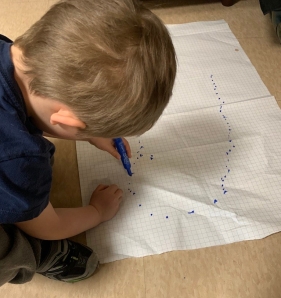The COVID-19 crisis has affected everyone in education differently. Classroom teachers, specialist teachers, administrators, librarians, custodians and office staff – we’ve all had to figure out what our jobs look like now. When the Ontario Ministry of Education postponed the remaining Professional Development (PD) days for the year, one of our teachers quipped: “Isn’t every day a PD Day now?” It certainly feels that way.
We all began this journey at a different point in our learning. Some teachers were already using digital tools to support the work they were doing in their classrooms and some teachers didn’t know how to log into their G-Suite accounts. Some students were familiar with handing in work online and other students had never used digital tools to support their learning. Some subjects lend themselves more easily to online learning: more tools exist, the content is easier to share online and students can work independently without sacrificing their understanding. Other subjects are very difficult to translate into the online environment – my heart goes out to the physical education, dance, drama and music teachers out there – it’s possible but it’s a tik-tokking challenge.
As we begin to thaw out both literally and figuratively this spring with restrictions on movement and assembly easing slowly, I want to consider the impact that COVID-19 might have on our practice as educators in the mid to long term.
When we go back to the physical building of school, which we inevitably will, it will be with all of this learning about distanced education in our back pockets. It also seems that we may be going back for periods of time, as this pandemic ebbs and flows or with only some students while others stay at home in shifts. While we don’t know what that will look like in its particulars, we can infer that it won’t look the same as it has for most of our careers. Our practice shouldn’t look the same either.

Here’s my modest proposal: from now on, every classroom will need to be a blended learning classroom, combining face-to-face and online elements. There will no longer be classes that don’t use online communication systems be they with parents or with students. It will become second nature to post content online, for assignments to be submitted online, for groups to meet online. Student portfolios will move online as students are now experienced at documenting their own work.
Blended learning will allow us the flexibility of moving seamlessly between face-to-face and online learning should we have to isolate again. We have given email addresses to 6-year-olds and the sky has not fallen; we can keep using these tools as part of our instructional toolkit – we don’t have to stop just because we’re back in the building.
Reverting back to our historical instructional practices would also be an abdication of our responsibility to prepare students for their futures. All of Ontario’s postsecondary institutions use an LMS (Learning Management System like D2L or Moodle) extensively, at any given moment, 16% of university students and 22% of community college students are enrolled in an online course. Most post secondary students graduate with at least one online course on their transcript. Getting students familiar with these tools is essential.
Beyond that, however, these systems make it possible to reach more students. While it’s true that distance learning doesn’t work for every student, what we’ve learned is that it works very well for some students. Some students really like learning at their own pace and in their own time. Some students prefer learning independently. Some students prefer interacting digitally to interacting face-to-face. And that’s okay.
Part of differentiating instruction is providing options for students that may not be the options you’d select for yourself. This experience has given students a set of skills and capacities they didn’t have before mid-March. It’s opened up a world of possibilities. We need to change the way we teach because they’ve changed the way they learn.







